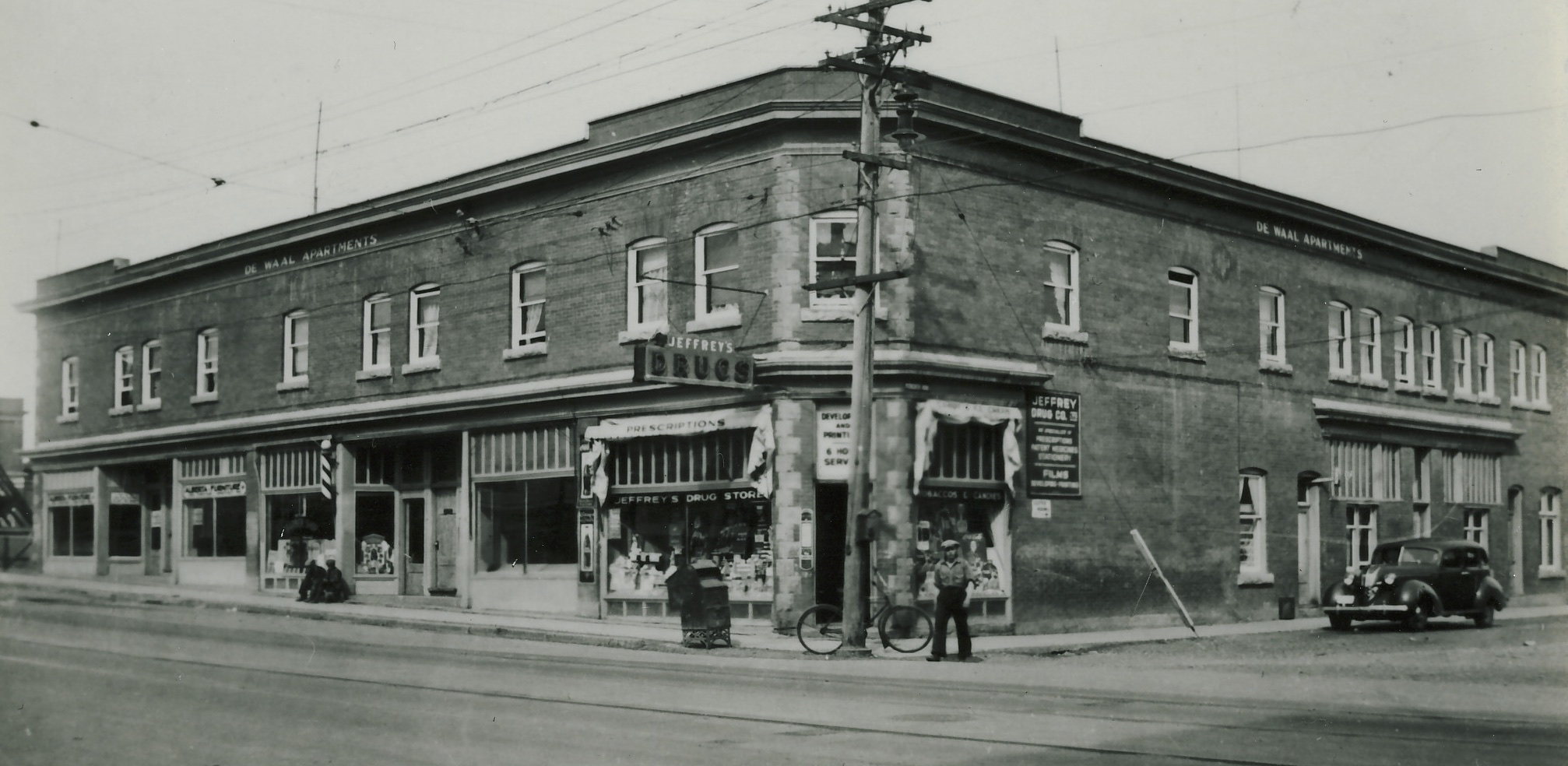by Deb Lee
When a building has been around for over 113 years, many changes have taken place both inside and outside its walls. To survive the passing years, not only is a little luck needed but also the capacity to adjust to changing times. The Poffenroth/de Waal Block located on 4 Street at Meredith Road is a beautiful and enduring example of adaptability and beauty.
The brick and sandstone block was cleverly built along the rising streetscape of Edmonton Trail in 1910 by Henry Poffenroth, a German immigrant from Russia. The two-storey Edwardian commercial block had seven storefronts on the main level and eight two-bedroom apartments upstairs. Two years after completing the block, Poffenroth exchanged it with Lyndsay Elliott for a farm in DeWinton. The major downturn of 1914 resulted in tough times in Calgary and when Elliot passed away in 1920, the block came under the ownership of Canada Life Assurance. Around that time, Theo de Waal, a recent Dutch immigrant, became the custodian. He and his family of four lived on site in a separate two bedroom, two-storey apartment. He started to put money away to purchase the building, which probably cost about $20,000.
It was common for newcomers to offer support to their later arriving countrymen and Theo de Waal was no exception. He supported activities of the new Dutch community and welcomed individuals to board at his place, prompting it to be known as the ‘Dutch Block.’
Originally, a stable was located out back for the horses, but as cars became more common, it was converted to a garage. The streetcar ran on steel tracks along 4 Street.
Responding to the challenging 1930s depression years, the large apartments were converted to over 30 single rooms, with shared bathroom and cooking facilities. Many single men from different cultures lived here and steady work was hard to find.
Some interesting tidbits: as a sideline, Theo de Waal made and sold a special, highly sought after liniment called Gypsy Ointment. After the building’s heating was converted to gas, the original coal room in the basement was converted to an air raid shelter. Music has been a common theme here, with second generation Ted and his son John, both drummers involved in the local music scene. A music studio, operated by John de Waal for 40 years, was in the basement until 2019.
In the early days, businesses that occupied the main floor included barber shops, a cigar factory, dry good stores, ladies outfitters, and over time, there were small grocery stores, a longstanding shoe repair shop, butcher, bookstore, jewellery, furniture, and drug stores.
By 2000, with the de Waal Block showing its age, a decision needed to be made about its future. John, the third generation of de Waal owners, and his wife, Mari Jo, made the bold decision to restore the block to the greatest extent possible. On the exterior, there was sandblasting of paint covered bricks and repair of windowsills, which required sourcing matching sandstone from Ohio. Wiring and plumbing were both modernized. The second-floor rooms were converted back to larger units. Many of the original building features can still be seen – the pressed tin ceilings, steel radiators, wooden floors, and claw foot tubs upstairs. In 2010, the de Waals were recognized with a City of Calgary Heritage Authority Lion award for their restoration efforts.
After almost 100 years in the family, the de Waals recently sold their heritage building. The new owners intend to continue with the current tenants. Let us hope this iconic landmark on one of Calgary’s oldest streets in Riverside continues to stand the test of time.
Now that we’ve got some nice spring weather, plan to take a walk down 4 Street to see the de Waal Block and all that it has to offer.

De Waal Block circa 1930
Click here to the Bridgeland Community News home page for the latest Bridgeland community updates.










